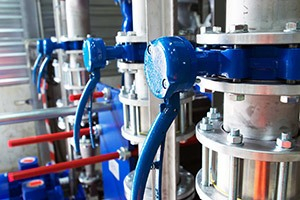- Krisztina Borsos
- Responsive
- Posted by
Desired outcome
The auxiliary chemicals widely used in the water and wastewater treatment industries are iron-based coagulants and chlorine-based disinfectants. ery often, both chemicals are needed at the same time.
Initial Problem Description
However, the use of chlorine gas or sodium hypochlorite comes with numerous limitations that hinder its practical application. The transportation and storage of chlorine gas are subject to strict conditions, and even with proper handling, there is a significant safety risk. Storing hypochlorite solution poses challenges in terms of dosing and storage due to the continuous decrease in the active ingredient concentration (free available chlorine content). Additionally, the relatively low concentration of the active ingredient makes transportation expensive.
Context
The benefits are evident:
• Only one chemical needs to be procured and stored.
• Chlorine production and usage occur in situ according to demand, eliminating the need for gas storage or loss of decomposition materials. Iron chloride is less unstable than hypochlorite solution and can be stored for a longer period.
Implementing the technology and developing its practical application require research and development efforts. The fundamentals of the electrolysis process need to be worked out during R&D activities.
Connection to cross-cutting areas
This technology has the potential to reduce transportation and storage costs as well as the carbon footprint. With this technology, we could produce the required amount of chlorine gas on-site for industrial purposes. The generated heat can be further utilized, thereby reducing electricity and heating costs as well. This contributes to circular economy.
Input
From the range of iron-based coagulating chemicals, chloride-containing ones can be highlighted, offering the theoretical possibility of a practical chlorine-producing technical solution. Simultaneously introducing iron salt provides the opportunity for electrolysis to produce chlorine from the same stored chemical.
Expectations
Development tasks:
• It needs to be clarified whether the application of an ion-selective separating membrane is necessary or if a more cost-effective solution can be employed for chlorine generation.
• The electrolysis potential of FeCl2, FeCl3, and iron chloride-sulfate solutions must be investigated.
• Materials for the cathode-anode electrodes of the electrolysis process need to be selected.
• The applied current and voltage must be optimized.
• The concentration of the electrolyte solution should be optimized.
• During experimental work, accompanying phenomena of the electrolysis process must be documented (heat generation, gas formation, color changes, precipitation appearance, etc.).
Desired Team Profile
For research work, a university degree is recommended, such as a chemical engineer, chemist, or bioengineer, with a bachelor's, master's, PhD degree, or currently enrolled in a doctoral program. We expect precision and perseverance from the applicant. Upon request, Hidrofilt Ltd can provide professional assistance.
Additional Information
The results need to be evaluated, and subsequently, a technological blueprint should be prepared. This blueprint will serve as the basis for creating mechanical and electrical plans for the manufacturing of the prototype device.
Economic calculations need to be conducted to determine the following key parameters:
• Equipment manufacturing costs,
• Operating costs of chlorine production, the production cost of the plant without machine depreciation.
• Demonstrable value of advantages achievable compared to conventional solutions.
An error analysis needs to be prepared for the electrolysis process, outlining the expected operational monitoring and maintenance tasks.
Related Keywords
About Krisztina Borsos
HIDROFILT Ltd. was founded in 1990 by Hungarian experts to offer high quality services in water and industrial wastewater treatment. Founders (current owners) were employees of the former state owned Nagykanizsa Fine-mechanical Company and its successors. This company was appointed as a manufacturer and supplier of small and medium scale water and industrial wastewater plants for Eastern Europe. There were 1600 people working in that plant out of which 280 people had been involved in the design and manufacture of water treatment plants. Technical background and skills of the owners and most of the fellow workers of Hidrofilt Ltd. had been established there.

You need to sign up to apply to this challenge and submit a motivation letter!

Learn more about the topics and find team members!
Help
Need help submitting your proposal or have questions regarding this Open Innovation Challenge?
Contact support
